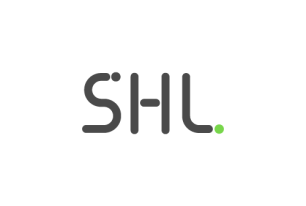How to Recruit and Select to Increase Your Organization’s Diversity
Addressing key areas of your recruitment and selection processes can help your organization attract and hire more diverse candidates.
Share
The Black Lives Matter movement grew exponentially this spring, which increased the awareness of the structural inequalities in our society. As a result, HR leaders and professionals have been asking what they can do to increase the diversity of their organizations through their recruitment and selection processes. While companies may not intend to have biased policies and procedures, seemingly harmless practices can allow inequalities to persist or even be exacerbated. Below are some areas of your recruitment and selection process that can be modified to increase both the quality and diversity of your employees.
#1—Defining Diversity for Your Organization
Before you begin you need to consider how your organization defines diversity, what you are trying to accomplish by increasing diversity, and in what areas of diversity you are currently lacking? Having these questions answered will help you identify the best path forward leveraging some of the ideas below.
#2—Candidate Sourcing
One of the most effective ways to improve diversity is by carefully examining your recruiting processes.
Put employee referral programs on hold – Many organizations promote employee referral programs because they help find quality talent quickly and without the risk of the unknown. However, if your employees are not particularly diverse, your referrals are likely not diverse either. An added danger of these programs is that current employees sometimes put pressure on decision makers to hire their referrals in order to obtain the (often quite large) bonus money.
Identify diverse recruiting channels – It can be easy to continue using sourcing channels (e.g., particular colleges, professional organizations, recruiting websites) that your organization has been using for many years. However, often these sources are not particularly diverse. Below are some suggestions for finding diverse sources for your applicants:
1. Search the internet for professional groups and contact them about listing your job openings on their job board or newsletters.
2. Search social media sites for organized groups around a particular profession and contact them about listing your job openings on their social media platform.
3. Recruit at more diverse schools such as community colleges, technical schools, or historically black colleges and universities (HBCUs)
4. Get involved with minority organizations (e.g., form mentoring programs with students in universities, encourage employees to become active volunteers within societies, become sponsors for events)
Review your job descriptions – Finally, it can help to carefully review your existing job descriptions and posting language to ensure it is inclusive (e.g., there is no gender or ethnically biased wording in the descriptions). Explicitly mention your organization’s commitment to creating a diverse and inclusive workforce.
It can help to carefully review your existing job descriptions and posting language to ensure it is inclusive.
#3—Selection Practices
Another effective way to increase diversity in your organization is by evaluating all stages of your selection process. Often companies carefully monitor the adverse impact of their tests but do not pay as much attention to the effect the rest of the processes and procedures can have on diversity.
- Minimum qualifications – Minimum qualifications have been around for many years and it isn’t always clear how or why they were established; however, these minimum qualifications can often restrict the diversity of applicants. For example, some jobs may require certain physical abilities (e.g., ability to lift 50lbs) which could disadvantage women or people with disabilities, or they may require a college degree, which could limit groups with traditionally lower socio-economic status. Carefully review your minimum qualifications with an eye towards whether they are truly necessary. For example, does the job truly require that every employee be able to lift 50lbs or could the job be restructured so employees can work together to lift. Similarly, is a college degree required, or could military experience or specific certifications (such as the Google Certificates program) be alternative ways to meet this requirement.
- Develop assessment programs with the goal of eliminating bias and improving inclusion and accessibility – Work with your assessment vendor(s) to ensure that your assessment process is unbiased and that assessments have been selected and combined in a way that minimizes the likelihood of adverse impact. Additionally, ensure your tests and interview questions use inclusive language and are implemented with accessibility in mind (e.g., tests are compatible with screen readers, reading levels are appropriate).
- Think beyond just tests – Of those who pass, who gets invited to the next step, and how? Companies often carefully monitor their testing programs. However, issues often occur with the steps that occur before or after the tests. For example, if 70% of applicants pass the test, how are decisions made regarding who is brought in for the next phase of the interview? Often this process is highly subjective and leads to unintended bias (e.g., mostly employee referrals are brought onsite). Injecting more objectivity to this process in the form of scored resumes, blind resume reviews, or a random set of applicants invited onsite can help.
#4—Monitor and Incentivize Diversity
Research has shown that what gets measured gets improved, even without quotas or threats of penalties. Companies often aren’t aware of where diversity is being stifled in their recruitment and selection process. Taking the time to collect, analyze, and share data about diversity can help shine a spotlight on where things are going well and where improvements can be made. Additionally, it can be helpful to include incentives for increasing diversity, for example by writing these into recruiters’ yearly goals or recognizing the efforts and achievements of staff.
The bottom line is that a little effort and patience upfront can lead to a persisting diverse pipeline and high performing organization! Reviewing your hiring programs by examining candidate sourcing and selection practices, and monitoring and incentivizing organizational diversity can help to uncover areas of opportunity to reduce bias and attract more diverse applicants to your organization.
Contact us to learn more about how we can support your efforts to build and sustain diverse and inclusive hiring programs.










